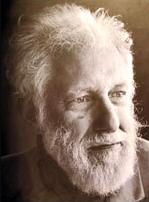Julian Trevelyan
| Julian Trevelyan | |
|---|---|
 |
|
| Born |
Julian Otto Trevelyan 20 February 1910 Dorking, Surrey |
| Died | 12 July 1988 Hammersmith, London |
| Nationality | English |
| Education | Engraving; Camouflage |
| Spouse(s) |
Ursula Darwin Mary Fedden |
| Elected | Royal Academician |
Julian Otto Trevelyan, RA (20 February 1910 – 12 July 1988) was a British artist and poet.
Trevelyan was the only child to survive to adulthood of Robert Calverley Trevelyan and his wife Elizabeth van der Hoeven. His grandfather was the liberal politician Sir George Trevelyan, 2nd Baronet, and his uncle the historian George Macaulay Trevelyan; he is the great-uncle of his namesake, Julian Trevelyan the pianist.
Julian Trevelyan was educated at Bedales School and Trinity College, Cambridge, where he read English Literature.
He moved to Paris to become an artist, enrolling at Atelier Dix-Sept, Stanley William Hayter's engraving school, where he learned etching. He worked alongside artists including Max Ernst, Oskar Kokoschka, Joan Miró and Pablo Picasso.
In 1935, Trevelyan bought Durham Wharf, beside the River Thames in Hammersmith, London. This became his home and studio for the rest of his life and was a source of artistic inspiration to him. He became a confirmed Surrealist and exhibited at the International Surrealist Exhibition, held at the New Burlington Galleries in London.
From 1950 to 1955, Trevelyan taught history of art and etching at the Chelsea School of Art. During 1955–63, he was Tutor of Engraving at the Royal College of Art, rising to Head of the Etching Department where he was influential to many younger printmakers, including David Hockney and Norman Ackroyd.
...
Wikipedia
